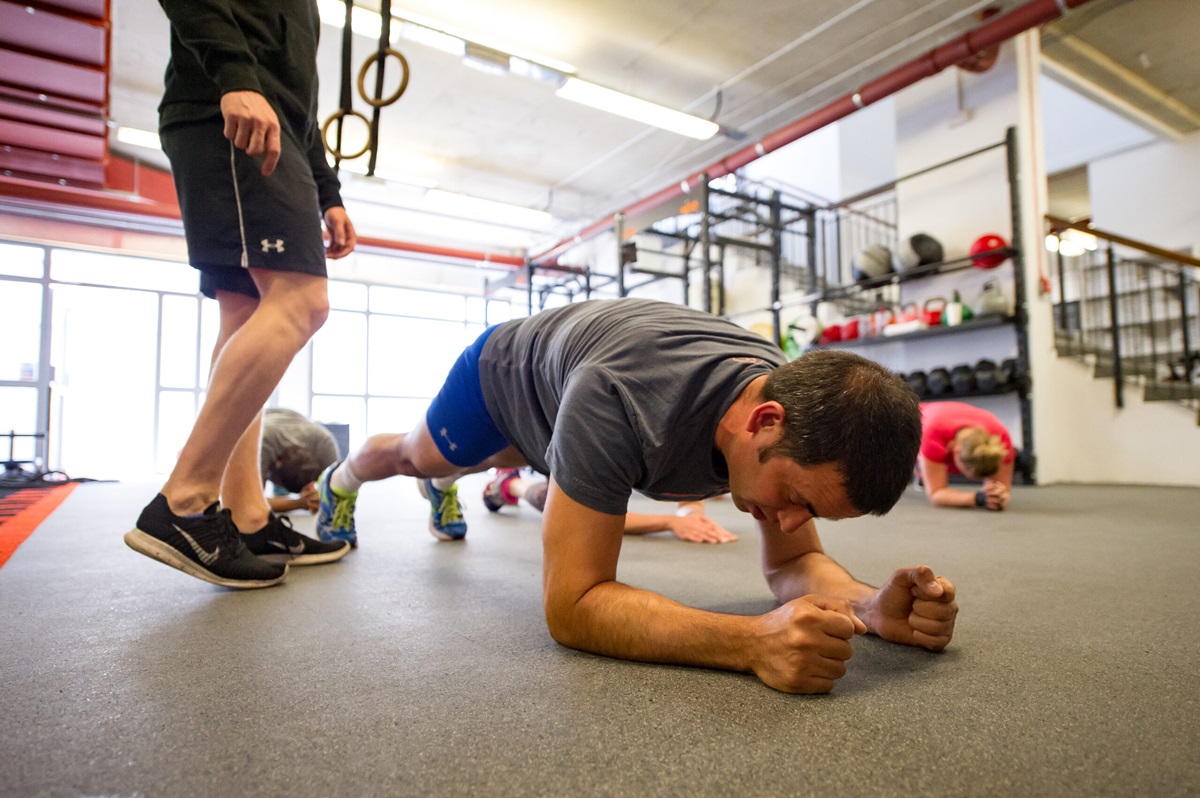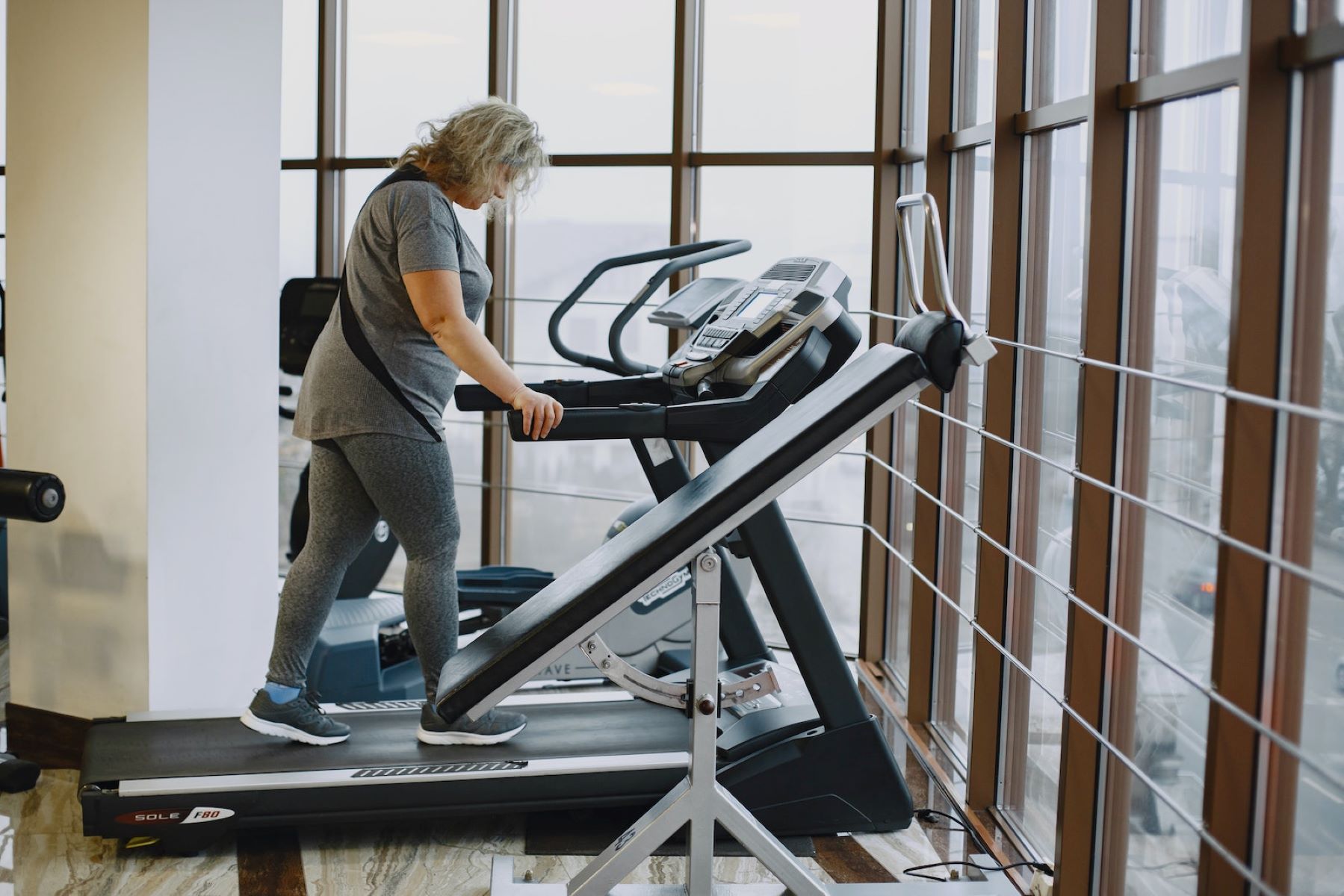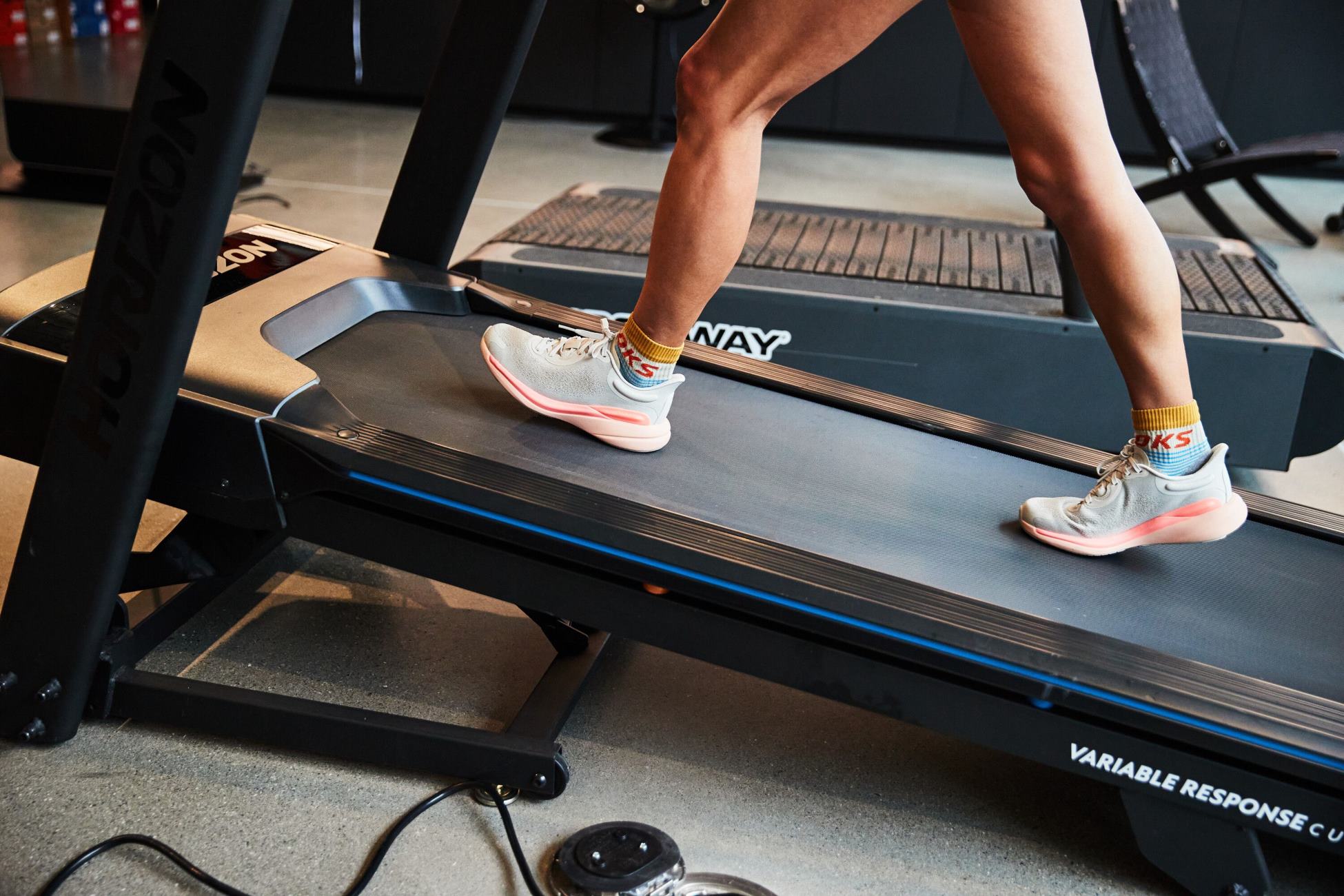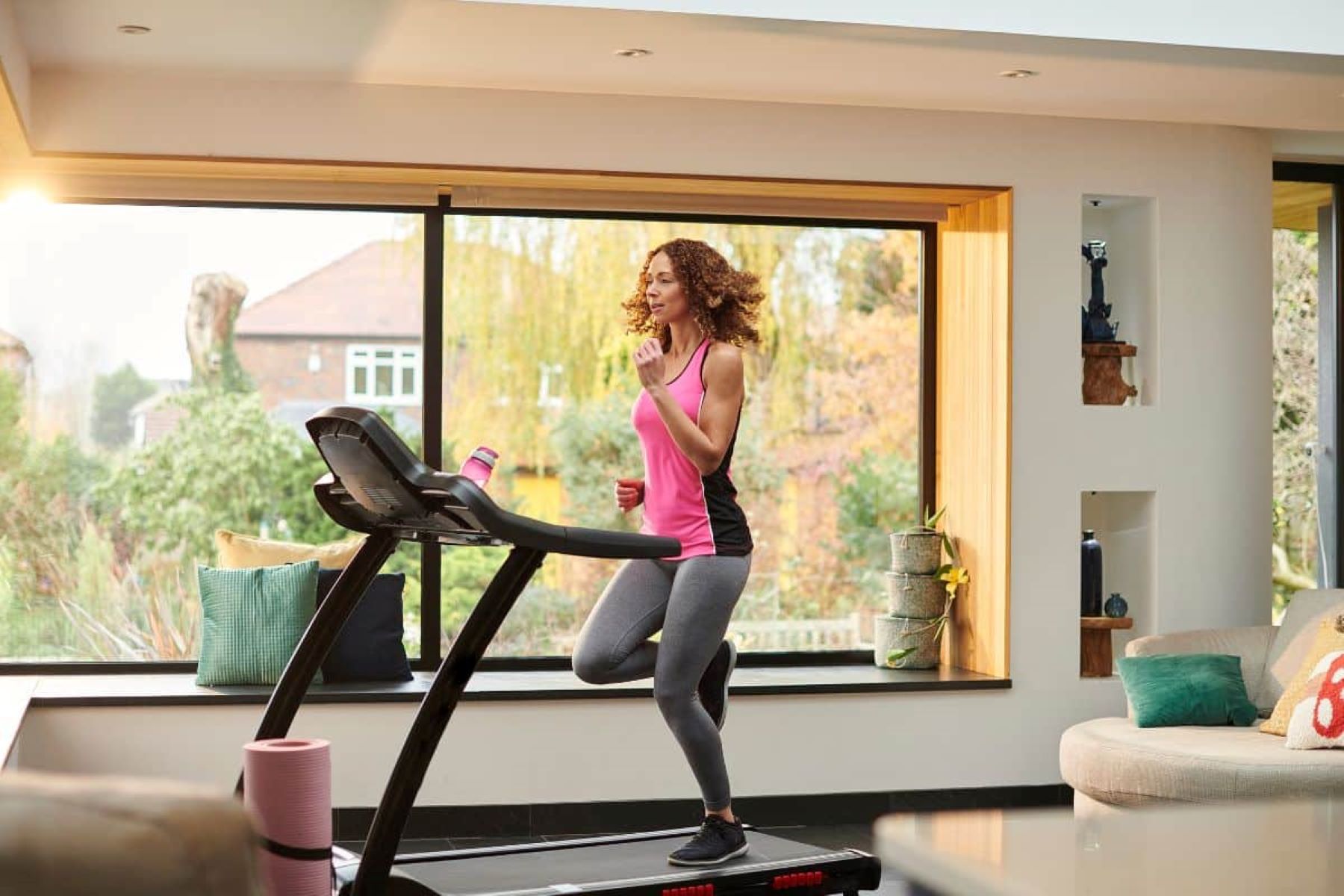

Featured
How To Do Hill Repeats On Treadmill
Modified: August 21, 2023
Discover how to do hill repeats on a treadmill with our featured guide. Improve your indoor running workout and strengthen your leg muscles for better performance.
Introduction
Are you looking to take your treadmill workouts to the next level? Hill repeats on a treadmill can be a highly effective way to improve your cardiovascular fitness, build strength, and burn calories. This challenging workout allows you to simulate the intensity and benefits of running uphill without needing to find a hilly terrain.
Whether you’re a seasoned runner looking to add variety to your training routine or a beginner wanting to push your limits, incorporating hill repeats on the treadmill can help you achieve your fitness goals. In this article, we will guide you through the essential steps to perform hill repeats on a treadmill effectively and safely.
By including hill intervals in your treadmill workouts, you can target multiple muscle groups, including your quadriceps, glutes, calves, and core. This type of training also enhances your aerobic capacity, improves your running efficiency, and increases your endurance. Additionally, the high-intensity nature of hill repeats can help you burn more calories in a shorter amount of time compared to steady-state running.
One of the key benefits of hill repeats on a treadmill is the ability to control the incline and speed, allowing you to tailor the workout to your fitness level and specific training needs. You can gradually increase the intensity of your hill repeats as you progress, challenging yourself to reach new heights and achieve better results.
Before diving into the details of how to perform hill repeats on a treadmill, it’s important to note that warm-up and cool-down routines are crucial to prepare your muscles and prevent injuries. These routines should include dynamic stretches, mobility exercises, and a gradual increase in speed and intensity to get your body ready for the workout and help it recover afterward.
So, fasten your seatbelt and get ready to conquer virtual hills on the treadmill. Let’s explore the benefits of hill repeats, how to choose the right treadmill, and the key factors to consider during your workout to maximize your results and minimize the risk of injury.
Benefits of Hill Repeats on a Treadmill
Hill repeats on a treadmill offer a wide range of benefits that can take your fitness to new heights. Here are some of the key advantages of incorporating this type of workout into your training routine:
- Strengthens Muscles: Hill repeats target your lower body muscles, including the quads, glutes, hamstrings, and calves. The increased resistance from the incline forces these muscles to work harder, leading to improved strength and power.
- Boosts Cardiovascular Fitness: Running uphill on a treadmill requires more effort from your heart and lungs, which helps to improve your aerobic capacity. This translates into better endurance and stamina during longer runs or races.
- Burns Calories: Hill repeats on a treadmill can help you torch calories faster than steady-state running. The combination of increased incline and intensity requires more energy, leading to a higher calorie burn during and after the workout.
- Enhances Running Efficiency: Running uphill forces you to engage your core muscles and adopt a more efficient running form. This can carry over to your regular runs on flat terrain, making you a more efficient and economical runner.
- Simulates Outdoor Running Challenges: If you don’t have access to hilly outdoor terrain, hill repeats on a treadmill can provide a realistic simulation of uphill running. This allows you to prepare for races or outdoor runs that involve challenging inclines.
- Provides Variety and Mental Stimulation: Adding hill repeats to your treadmill workouts adds variety and breaks the monotony of running at a constant incline. The changing intensity and the challenge of conquering virtual hills can keep you engaged and motivated throughout the workout.
- Adaptable for Different Fitness Levels: Hill repeats on a treadmill are suitable for runners of all fitness levels. You can adjust the incline and intensity to match your abilities, gradually increasing the challenge as you progress and become stronger.
By incorporating hill repeats on a treadmill into your training routine, you can take your fitness to new heights, improve your running performance, and enjoy a host of physical and mental benefits. So, let’s explore how to choose the right treadmill for hill repeats, and the necessary warm-up and cool-down routines to ensure a safe and effective workout.
Choosing the Right Treadmill
When it comes to performing hill repeats on a treadmill, having the right equipment is crucial for a successful and safe workout. Here are some factors to consider when choosing the right treadmill for your hill repeat training:
- Incline Range: Look for a treadmill that offers a wide range of incline options. Ideally, it should be able to reach a significant incline of at least 10-15%. This will allow you to simulate steep hills and provide a challenging workout.
- Stability and Durability: A sturdy and stable treadmill is essential, especially when running at high speeds and steep inclines. Look for a treadmill with a durable frame and a robust construction that can withstand the intensity of your hill repeat workouts.
- Speed Range: Check the maximum speed the treadmill can reach. It’s important to find a treadmill that can accommodate your running pace, especially during the faster intervals of your hill repeats. Look for a treadmill that offers a speed range that aligns with your fitness goals and running ability.
- Programs and Features: Some treadmills offer built-in programs specifically designed for hill workouts. These programs automatically adjust the incline and speed to simulate uphill running. Additionally, look for features like heart rate monitors, customizable programs, and interactive displays to enhance your training experience.
- Cushioning System: Hill repeats can put additional stress on your joints and muscles, so it’s important to choose a treadmill with a cushioned deck that provides adequate shock absorption and reduces the risk of impact-related injuries.
- Size and Space: Consider the dimensions of the treadmill and ensure that it fits comfortably in your available space. Measure the area where you plan to place the treadmill to ensure it will fit properly in your home or gym.
- Budget: Determine your budget and look for treadmills that fall within your price range. There are a variety of options available, ranging from basic treadmills to more advanced models with additional features. Consider your needs and prioritize the features that are most important to you.
Once you’ve identified a few treadmill options that meet your criteria, read reviews, and compare the specifications and warranties. It’s also helpful to try out different models in-store or at a gym if possible to get a feel for their stability, noise levels, and overall usability. Investing in a quality treadmill that meets your needs will not only enhance your hill repeat workouts but also provide a reliable and enjoyable running experience.
Now that you have an understanding of what to look for in a treadmill, let’s move on to the crucial step of preparing your body for hill repeats with a proper warm-up routine.
Warm-up Routine
A thorough warm-up routine is essential before starting any intense workout, including hill repeats on a treadmill. It prepares your muscles, joints, and cardiovascular system for the upcoming challenge and reduces the risk of injury. Here’s a suggested warm-up routine to help you get ready for your hill repeat session:
- Dynamic Stretches: Begin your warm-up with dynamic stretches to mobilize your joints and increase blood flow to your muscles. Perform leg swings, arm circles, walking lunges, and hip circles to activate and warm up your major muscle groups.
- Light Cardio: Follow the dynamic stretches with a few minutes of light cardio activity, such as jogging or brisk walking, on the treadmill. This helps elevate your heart rate gradually and increases blood circulation throughout your body.
- Gradual Increase in Speed: After the light cardio, gradually increase the speed of the treadmill to further warm up your muscles and prepare them for the upcoming intensity. Start at a comfortable pace and gradually build up to a moderate pace that challenges you but still allows for conversation.
- Hill Walk or Jog: Once you’ve reached a moderate pace, incorporate a short period of walking or jogging on an incline to mimic the uphill terrain of hill repeats. Set the incline to a low to moderate level and focus on engaging your core and maintaining proper form.
Remember to listen to your body during the warm-up and make any necessary adjustments. You want to feel warm, loose, and ready to tackle the hill repeats ahead. The warm-up routine should typically last around 10-15 minutes, but you can adjust it based on your needs and preferences.
The warm-up phase is an essential part of your hill repeat workout, as it prepares your muscles and increases your range of motion. Additionally, it mentally prepares you for the upcoming challenge and helps you transition smoothly into the more intense part of the workout.
Now that you’ve properly warmed up, it’s time to set the incline and dive into the heart-pumping hill repeats on the treadmill. Next, we’ll guide you through the process of setting the incline and determining the appropriate speed and duration for your workout.
Setting the Incline
Setting the incline correctly is vital for a challenging and effective hill repeat workout on a treadmill. The incline simulates the uphill terrain, forcing your muscles to work harder and providing the desired training effect. Here are some guidelines to help you set the incline:
- Consider Your Fitness Level: If you’re new to hill repeats or have a lower fitness level, start with a mild incline between 2-4%. As you become more comfortable and stronger, gradually increase the incline to make the workout more challenging. Advanced runners can aim for inclines of 8-12% or even higher, depending on their goals and fitness level. Remember, the incline should feel challenging but manageable.
- Replicate Outdoor Terrain: Think about the types of hills or inclines you encounter in your outdoor runs and races. Adjust the incline on the treadmill to mimic those terrains, whether it’s gradual slopes or steeper hills. This will help you prepare specifically for the routes and events you’re training for.
- Listen to Your Body: Pay attention to how your body feels during the initial incline sections of your workout. If the incline feels too easy, consider increasing it slightly. Conversely, if it feels too challenging or your form starts to break down, decrease the incline slightly to maintain proper technique and reduce the risk of injury.
- Mind the Speed: Keep in mind that the higher the incline, the slower your running pace may need to be. Adjust your speed accordingly to maintain your target effort level and prevent excessive strain. It’s better to focus on maintaining proper form and intensity rather than chasing a specific speed when performing hill repeats on a treadmill.
Remember that setting the incline is a personal decision that should align with your fitness level and goals. Experiment with different incline levels during your workouts to find what challenges you without compromising your form or risking injury.
Now that you’ve set the proper incline, it’s time to determine the appropriate speed and duration for your hill repeats. We’ll explore these factors in the next section to help you optimize your workout.
Speed and Duration of the Repeats
When it comes to hill repeats on a treadmill, finding the right balance between speed and duration is essential for an effective workout. Here are some considerations to help you determine the appropriate speed and duration for your hill repeats:
- Start Conservatively: If you’re new to hill repeats or haven’t incorporated them into your training before, start with a shorter duration and a lower speed. It’s better to gradually increase the intensity as you get accustomed to the workout, rather than pushing too hard and risking injury.
- Focus on Effort Level: Rather than fixating on a specific speed, focus on maintaining a challenging effort level throughout each hill repeat. You should feel a significant increase in intensity as you tackle the incline, but still be able to maintain proper form and finish each repeat strong.
- Interval Approach: One common approach for hill repeats is to perform them in intervals. Start with shorter intervals, such as 30 seconds to one minute of hard effort, followed by a brief recovery period. As you progress, you can increase the duration of each repeat or reduce the recovery time to make the workout more challenging.
- Adjust Speed Accordingly: Your speed during hill repeats may vary depending on the incline, your fitness level, and the duration of each repeat. Aim for a speed that allows you to maintain good form and effort throughout. It’s important to challenge yourself, but also listen to your body and avoid overexertion.
- Track Your Progress: Keep a record of your hill repeat workouts, noting the speed and duration of each repeat. This will allow you to track your progress over time, gradually increasing the challenge and monitoring your improvements. It’s satisfying to see your speed or duration increase as you get stronger and more efficient.
As you gain experience and feel more comfortable with hill repeats, you can increase the duration of each repeat and adjust the speed accordingly. Just remember to maintain proper form, keep your effort level high, and focus on the quality of each repetition.
Now that you have a solid understanding of the speed and duration aspects, let’s shift our focus to the importance of maintaining proper form and technique during hill repeats on a treadmill.
Form and Technique
Maintaining proper form and technique during hill repeats on a treadmill is crucial for optimizing your workout, preventing injuries, and maximizing the benefits. Here are some key points to keep in mind:
- Posture: Focus on maintaining an upright posture throughout the workout. Keep your chest lifted, shoulders relaxed, and eyes forward. Avoid leaning too far forward or hunching over, as this can put unnecessary strain on your back and affect your running efficiency.
- Arm Swing: Your arm swing plays a vital role in maintaining balance and propelling you forward. Ensure that your arms swing naturally in a controlled motion, with a slight bend at the elbows. Avoid excessive swinging or crossing the arms over the centerline of your body.
- Foot Placement: Aim to strike with your midfoot or forefoot, rather than your heel. This promotes a more efficient running stride and reduces the risk of overstriding, which can put excessive stress on your joints. Try to land softly and quietly, maintaining a quick turnover of your feet.
- Engage Your Core: Activating your core muscles helps stabilize your body and maintain proper form. Imagine pulling your belly button towards your spine, engaging your abdominal muscles throughout the workout. This will help improve your running posture and overall stability.
- Use your Glutes: Your gluteal muscles play a significant role in running uphill, as they provide power and stability. Focus on activating your glutes with each stride, pushing off the treadmill surface and driving your leg forward. This will enhance your running efficiency and protect your lower body from excessive stress.
- Breathing: Pay attention to your breathing during hill repeats. Take deep, controlled breaths, inhaling through your nose and exhaling through your mouth. This will ensure optimal oxygen supply and help you maintain a steady rhythm throughout the workout.
Proper form and technique not only improve running efficiency but also reduce the risk of injury. It’s important to be mindful of your body alignment and make adjustments as necessary. If you feel any pain or discomfort during your hill repeats, listen to your body and make the necessary modifications to protect yourself from injury.
Now that you have a solid understanding of the form and technique, let’s move on to the importance of incorporating recovery periods into your hill repeat workout.
Recovery Periods
Integrating recovery periods into your hill repeat workout is essential for allowing your body to recover, reducing fatigue, and improving overall performance. Here’s what you need to know about incorporating effective recovery periods:
- Duration: The duration of your recovery periods should be long enough to allow your heart rate to come down and your breathing to normalize, but not so long that your muscles become completely rested. Aim for active recovery, with a duration of 1 to 2 minutes between each hill repeat. This timeframe provides enough time for your body to recover while maintaining the overall intensity of the workout.
- Active Recovery: Instead of completely stopping or walking during your recovery periods, engage in light jogging or brisk walking on a flat surface. This promotes blood circulation, helps flush out metabolic waste products from your muscles, and prepares your body for the next hill repeat.
- Hydration and Nutrition: Use the recovery periods to hydrate yourself and refuel with a small amount of water or an electrolyte drink if needed. This will help maintain your energy levels and support optimal performance throughout the workout.
- Focus on Breathing: During the recovery periods, pay attention to your breathing and try to bring it back to a relaxed and controlled state. Take deep breaths and allow your heart rate to gradually decrease. This will help you maintain focus and prepare mentally for the next repetition.
- Listen to Your Body: Everyone’s recovery needs are different, so it’s essential to listen to your body’s signals. If you feel overly fatigued or experience pain or discomfort, consider extending your recovery period slightly to ensure adequate rest before the next repetition.
Properly implemented recovery periods optimize your workout by allowing your muscles and cardiovascular system to adapt to the demands of the hill repeats. By including these periods, you’ll be able to sustain a high level of effort and performance throughout your training session.
Now that you understand the importance of recovery periods, let’s discuss the significance of monitoring your progress during hill repeats on a treadmill.
Monitoring Progress
Monitoring your progress during hill repeats on a treadmill is a valuable strategy for assessing improvement, setting goals, and staying motivated. Here are some effective ways to track and monitor your progress:
- Keep a Workout Journal: Maintain a journal where you can record details of each hill repeat workout. Include information such as the date, duration, incline, speed, and any other relevant notes. This allows you to look back and compare your progress over time.
- Track Distance or Time: Measure the distance covered or the time it takes for each hill repeat. By tracking these metrics, you can see how you’re progressing and adjust your goals accordingly. As you become stronger, you may find that you can cover more distance or complete the repetitions more quickly.
- Monitor Heart Rate: Use a heart rate monitor to keep track of your heart rate throughout the workout. This can provide valuable insights into the intensity of your effort and help you gauge whether you’re pushing yourself appropriately during each hill repeat.
- Assess Perceived Exertion: Pay attention to your perceived exertion during each hill repeat. Rate your effort on a scale of 1 to 10, with 1 being very easy and 10 being maximum effort. This subjective assessment can provide additional context to evaluate your progress and adjust the intensity of future workouts.
- Repeat Performance Tests: Periodically perform performance tests, such as a time trial or a set number of hill repeats, to assess your progress. Compare your results from previous tests to see how you’ve improved over time.
Regularly monitoring your progress gives you valuable insights into your strengths, weaknesses, and areas for improvement. It also allows you to set specific and achievable goals, which can boost your motivation and drive your training forward.
Remember, progress is not always linear. Some weeks you may see significant improvement, while others may involve slight setbacks. Embrace the journey, celebrate your successes, and learn from any challenges you encounter. By monitoring your progress, you can make informed decisions, adjust your training accordingly, and continue to push yourself towards becoming a stronger, more confident runner.
Now that you understand the importance of monitoring progress, let’s move on to the final section on incorporating a cool-down routine after your hill repeat workout.
Cool-down Routine
A proper cool-down routine is essential to help your body gradually transition from the intensity of the hill repeat workout to a state of rest. Cooling down allows your heart rate to gradually decrease, prevents blood pooling in your legs, and promotes efficient recovery. Here’s a suggested cool-down routine to incorporate after your hill repeat workout:
- Slow Down: Reduce the speed of the treadmill to a comfortable, slow pace. This helps your heart rate gradually return to its resting state and aids in the removal of metabolic waste products from your muscles.
- Gentle Cardio: Continue with a few minutes of low-intensity cardio activity, such as walking or slow jogging, to maintain blood flow and gently work your muscles. This can help facilitate the flushing out of toxins and initiate the recovery process.
- Static Stretching: Perform static stretches targeting the major muscle groups used during your hill repeat workout. Focus on your calves, quadriceps, hamstrings, glutes, and hip flexors. Hold each stretch for 15-30 seconds and remember to breathe deeply to enhance relaxation of the muscles.
- Foam Rolling or Self-Massage: Use a foam roller or a massage ball to target any tight or sore areas. Roll slowly and apply gentle pressure to release tension in your muscles and promote circulation. This can help alleviate muscle soreness and aid in recovery.
- Hydrate and Refuel: After your cool-down, make sure to hydrate yourself by drinking water or an electrolyte drink. Also, consume a balanced post-workout snack or meal that includes carbohydrates and protein to replenish energy stores and aid in muscle repair.
A proper cool-down routine helps gradually bring your body back to a relaxed state and reduces the likelihood of post-workout muscle stiffness and soreness. It also prepares your body for future workouts by promoting efficient recovery and maintaining flexibility.
Remember to listen to your body during the cool-down routine and make any necessary modifications based on how you feel. The duration of your cool-down can range from 5 to 10 minutes, depending on your preferences and the intensity of your workout.
Now that you have completed your cool-down routine, take a moment to reflect on the progress you’ve made, the challenges you’ve overcome, and the satisfaction of completing a challenging hill repeat workout.
Conclusion
Hill repeats on a treadmill offer a challenging and effective way to improve your cardiovascular fitness, build strength, and enhance your running performance. By incorporating this type of workout into your training routine, you can simulate the intensity and benefits of running uphill, regardless of the terrain you have access to.
In this article, we explored the benefits of hill repeats on a treadmill, the importance of choosing the right treadmill, and the essential steps for a successful hill repeat workout. We discussed the significance of warming up properly, setting the incline appropriately, and maintaining proper form and technique throughout the workout. We also highlighted the importance of incorporating recovery periods, monitoring progress, and implementing a cool-down routine to aid in your overall performance and promote safe and effective training.
Remember, consistency is key when it comes to hill repeats on a treadmill. Gradually increase the intensity of your workouts over time, be patient with your progress, and listen to your body to avoid overexertion and prevent injuries.
So, fasten your seatbelt, lace up your running shoes, and embark on a journey filled with virtual hills and personal growth. Incorporate hill repeats on a treadmill into your training routine and watch as your cardiovascular fitness, strength, and running performance reach new heights. Happy running!









